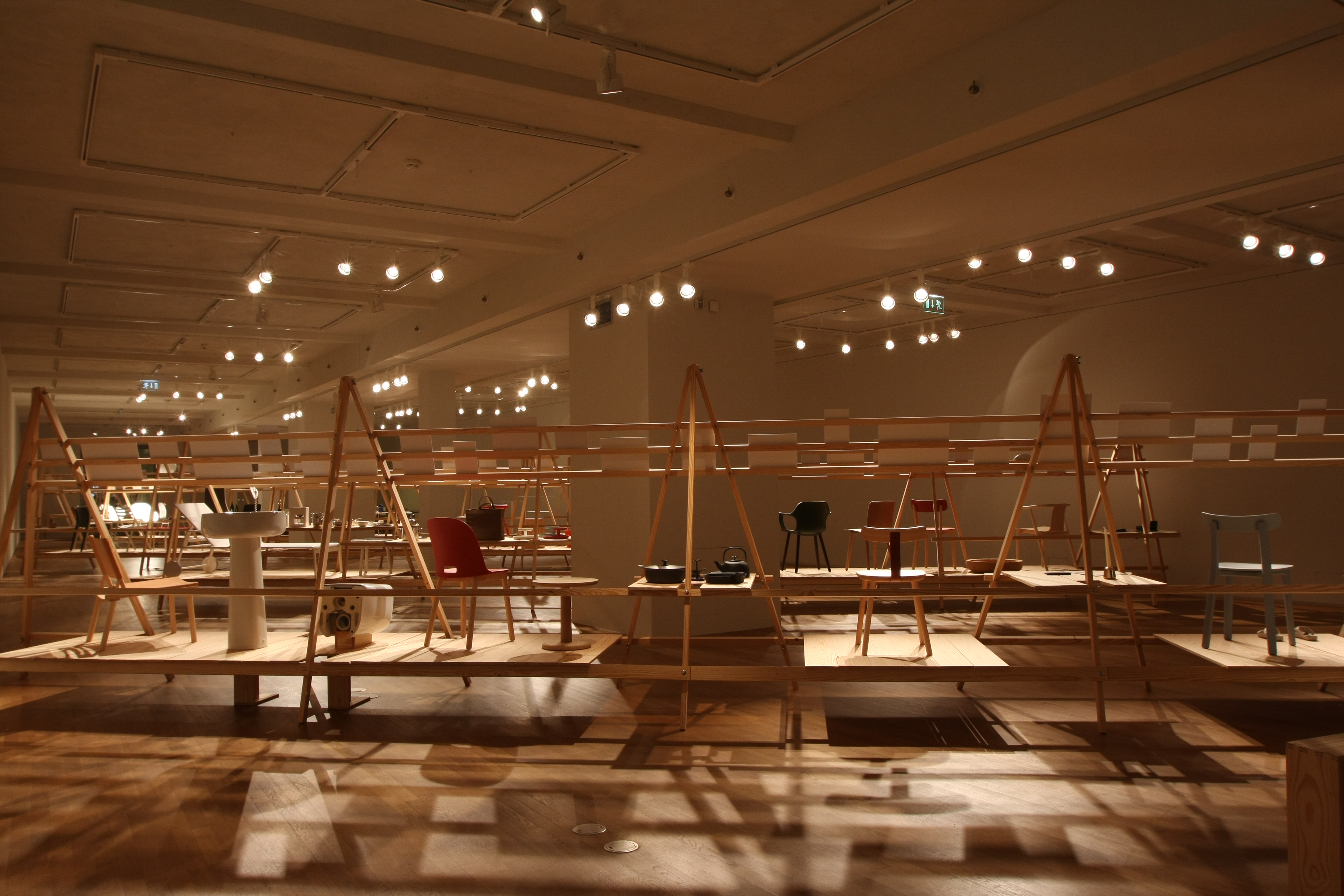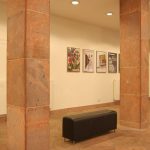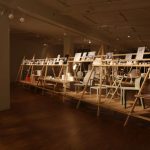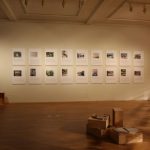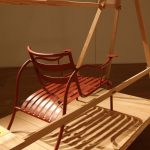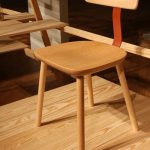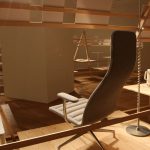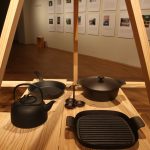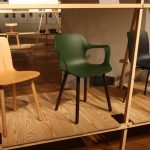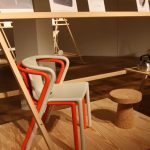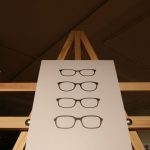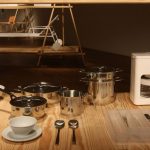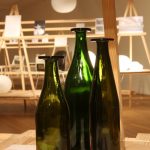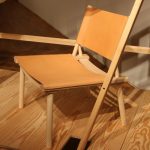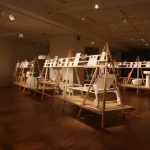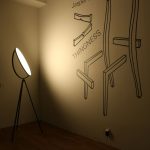Jasper Morrison – Thingness @ Grassi Museum for Applied Arts Leipzig
Visitors to the Grassi Museum for Applied Arts Leipzig have long been able to rest on Jasper Morrison’s Vitra Bench, an object liberally distributed throughout the museum complex.
With the exhibition Thingness the Grassi Museum for Applied Arts Leipzig offers visitors a deeper insight into Jasper Morrison’s oeuvre, and creative processes.
Born in London in 1959 and a graduate of both Kingston Polytechnic and the Royal College of Art, Jasper Morrison has established himself over the past thirty years as one of the leading designers of his generation; and realised a portfolio of works which are as reduced in form as they are in comportment. Premiered in 2015 at the Centre d’innovation et de design Grand Hornu, Thingness is the first retrospective of Morrison’s career, the presentation at the Grassi Museum Leipzig is, following Zürich and Berlin, its fourth station. And our third rendezvous with Thingness.
And that voluntarily. We aren’t contractually obliged to visit it. Wouldn’t complain about the retainer if we were. But aren’t. Choose to.
Not least because an exhibition is, or at least should be, affected by the space in which it is presented, each space necessarily requiring a different scenography, and the way that new scenography interacts with the inherent ambience of the space allowing for new perspectives and impressions.
Somethings remain however the same, and so we refer you dear reader to our post from the Museum für Gestaltung Zürich, and also the A&W Designer of the Year award exhibition in Cologne, for our conversations with Jasper Morrison about his career, approach to his work and Thingness, and to our post from the Bauhaus Archiv Berlin for our reflections on Morrison’s work, largely, though not exclusively, in context of our favourite Jasper Morrison text, The Poet will not Polish. A text composed during an exchange semester in 1980s West Berlin.
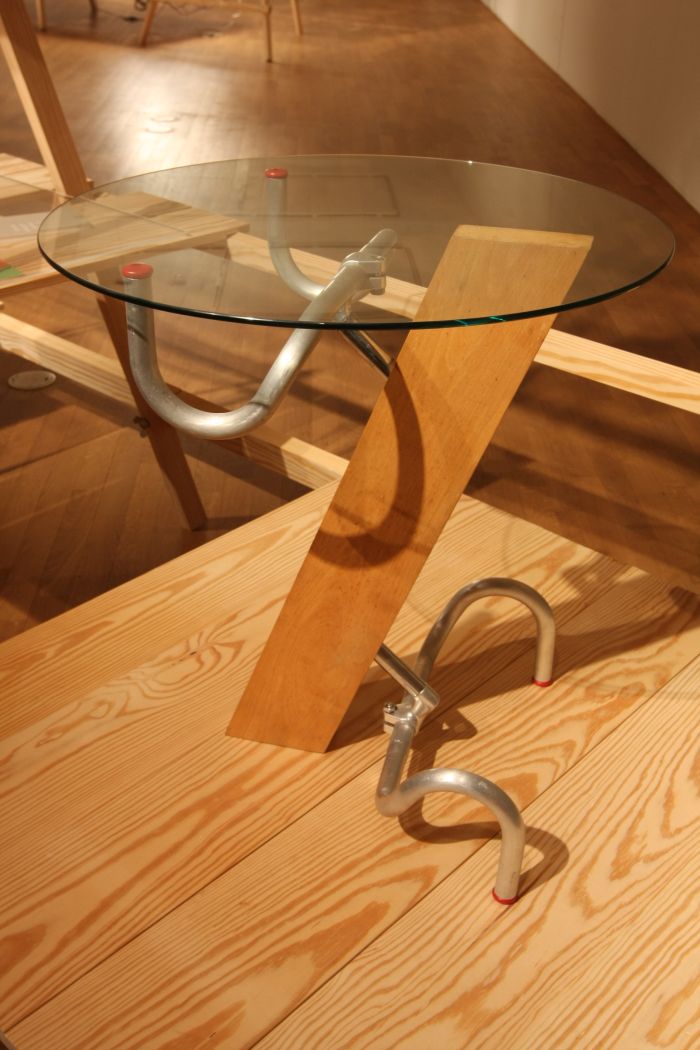
Handlebar Table by Jasper Morrison, as seen at Jasper Morrison – Thingness, Grassi Museum for Applied Arts Leipzig
Presenting a chronological review of Jasper Morrison’s work, or at least an abridged review of his extensive canon, Thingness opens with Morrison’s ever endearing and alluring Handlebar Table from 1981 and Slatted Stool for SCP from 1983, before moving on to chart both his career and the development of his design as expressed by projects for the likes of, and amongst many others, Magis, Vitra, Flos or Oigen.The selected objects being ably supported by short texts, sketches and photographs which help set the works in context and/or explain their genesis. Beyond the projects per se Thingness at the Grassi Museum Leipzig also features photos from his The Good Life project, selected examples of Morrison’s publications and a presentation of A World Without Words, a slide-show Morrison once presented in Cologne in place of the requested lecture.
Whereas largely the same presentation as that already shown in Grand Hornu, Zürich and Berlin, what is different in Leipzig is that the presentation modules are free-standing, meaning that for the first time you can see the works from behind, in 360° as it were, which may sound like blah, blah, whatever; but, genuinely aids and assists the viewing of the objects, the chance to explore them from different perspectives allowing the visitor to understand them better, something that is particular interesting and enjoyable, important even, in context of works such as the Handlebar Table, Thinking Man’s Chair or the T1 chair for Maruni. A chair which is slowly becoming one of our favourites in the Morrison canon.
In addition, that fact that Morrison is still very active as a designer means that as an exhibition Thingness grows, or perhaps better put expands, with his portfolio; therefore, the Grassi showcase, logically and pleasingly, features newer, 2017, projects, including the pen Aion for Lamy, the Ni-jo sandals for Camper and the Jijibaba clothing label established in cooperation with Jaime Hayon. No honest! Morrison & Hayon! Who’d have thought!
Amongst the newer projects the highlight for us is/was without question the 1″ Chair for Emeco, a project which for us through its ease, lightness, proportions and charmingly unfamiliar familiarity very neatly argues that despite the length of the timeline presented Jasper Morrison continues true to himself and his positions. And more importantly continues to develop as a designer.
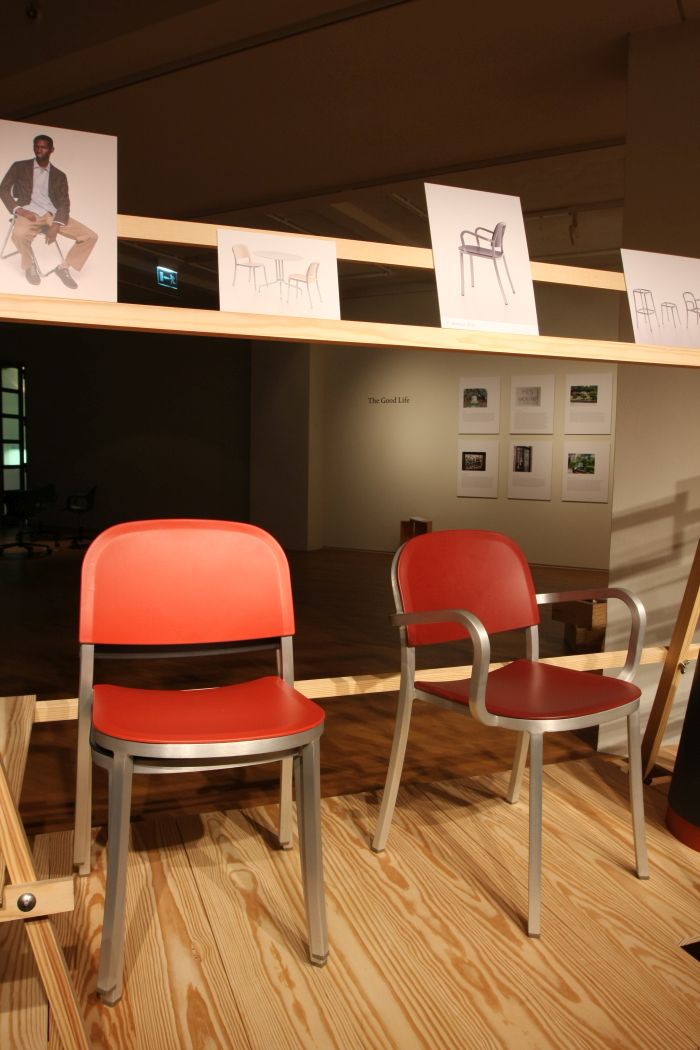
1″ Chair by Jasper Morrison for Emeco, as seen at Jasper Morrison – Thingness, Grassi Museum for Applied Arts Leipzig
On account of the number of times, and settings, in which we have now seen Thingness we have had good opportunity to develop our understanding of and position to Morrison’s work. As we say, we’ve now seen it thrice. Designer Michel Charlot, a former employee in Morrison’s Paris office and responsible for the scenography and exhibition design since the very beginning, since Thingness’s pre-history as an exhibtion of Morrison’s 1980s designs for Belgian retailer Gyselink in Kortijk, has seen it untold times more than us: not only in its finished forms, but in the preparations for each showcase.
And so, we wondered out loud, having spent so long working with Jasper Morrison’s works, are there any projects which stand out for him, which resonate in particular?
“Generally I really like the work he did in the 1990s” answers Michel, “I think that some of his best work is from that decade, including, for example, the Glo-balls for Flos. It is such a simple object, a simple shape which in itself isn’t new, yet one which he has realised in a material and with such well considered proportions that there is no way to improve it. It’s what I call a “Killer Project”, by which I mean if a manufacturer asked me to produce a hanging glass lamp I’d say no, because I can’t improve on the Glo-ball”
A similar “Killer Project” for Michel, albeit from a later period, is the HAL chair family for Vitra, a project about which Michel particularly enthuses in context of the comfort and the number of possible variations of typology and function achievable, while beyond such traditional product design projects, and returning to the 1990s, Michel also highlights Morrison’s Hannover tram, a project realised in context of the Expo 2000 World’s Fair.
“I’m quite jealous of such a project, to be able to design a tram”, explains Michel, “its a wonderful thing for the city of Hannover to have such a high-quality, well designed tram, not least because such can have a big impact on the user. For example, Swiss trains used to have really nice restaurant wagons, not necessarily well furnished, but with a really nice atmosphere, however recently they changed them, turned them into a faux contemporary coffee shop concept and it is terrible, in a way it ruined my last journey because I used to enjoy my time in the restaurant wagon. And that for me is an example of how design can affect a space and the individual, that a good design can have a positive influence on the user, similarly with the Hannover trams, having well designed public transport is good for the users, good for the city. Or for example a well designed hotel can influence the way you feel, can positively affect your mood and confidence.”
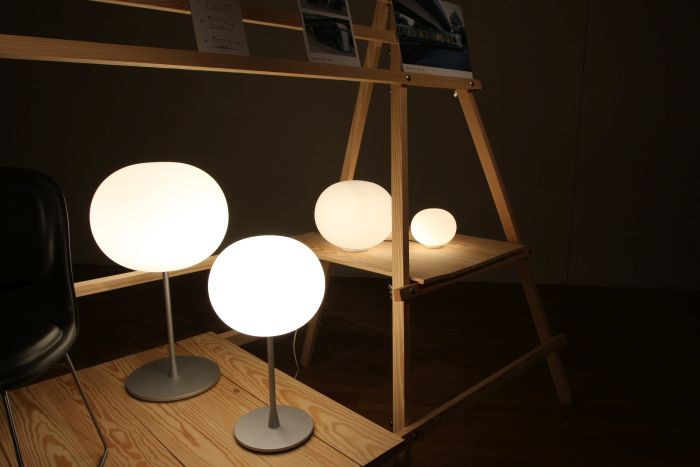
Glo-ball by Jasper Morrison for Flos, as seen at Jasper Morrison – Thingness, Grassi Museum for Applied Arts Leipzig
This idea of the importance of the space neatly parallels what we noted at the beginning about different exhibition locations offering different exhibition experiences.
In Leipzig the use of the space, and for all through Michel’s intelligent, rational and well considered presentation concept, allows for a clear and undisturbed view of the objects, while the slaloming path one is required to take creates a very unhurried atmosphere; you naturally slow down, saunter a bit, don’t feel the next object coming at you as if on a conveyor belt, while through the fact you have objects left and right you can more readily compare and contrast and explore those themes and approaches so fundamental and essential to Jaspers Morrison’s work, be it refining existing concepts, innovative use of materials and processing technology, promoting the normal over the extraordinary, developing fleeting observations into tangible products, or any of those other approaches that Jasper Morrison has honed over the decades to allow him to create deceptive pieces, pieces which exist on several layers, are often inherently complex, yet have an almost apologetic, if very endearing, simplicity. There is nothing showboating about Jasper Morrison’s work, yet the majority of his portfolio is unlikely to get lost in a crowd.
Such an understanding of Jasper Morrison, and by extrapolation design, can be learned in Thingness, but what has Michel Charlot learned from his time with Jasper Morrison?
“To believe in your idea, to work on your idea and not give up on ideas quickly. Ideas are the one thing, but what you do with them is the most important, and to simplify an idea and make it something that is in a way obvious”, he reflects, “even if that can make it difficult when presenting a project to a client, because they say “Its obvious!” Yes! Because I’ve invested time and effort making it obvious, it wasn’t obvious before!”
In our contemporary world we are all prone to accepting superficial obviousness rather than attempting to understand the more complex underlying realities; Thingness is an excellent place to start understanding the complex obviousness of good design.
And with the Morrison Bench you have a most agreeable place to sit while you reflect.
Jasper Morrison Thingness runs at the Grassi Museum for Applied Arts, Johannisplatz 5-11, 04103 Leipzig until Saturday May 6th
Full details, including information on the accompanying fringe programme can be found at www.grassimuseum.de
Further information on Michel Charlot can be found at https://michelcharlot.com/
- Bench by Jasper Morrison for VitraThinking Man’s Chair by Jasper Morrison, as seen at the Grassi Museum for Applied Arts Leipzig
- Jasper Morrison – Thingness @ Grassi Museum for Applied Arts Leipzig
- The Good Life, as seen at Jasper Morrison – Thingness, Grassi Museum for Applied Arts Leipzig
- Thinking Man’s Chair by Jasper Morrison, as seen at Jasper Morrison – Thingness, Grassi Museum for Applied Arts Leipzig
- T1 by Jasper Morrison for MaruniThinking Man’s Chair by Jasper Morrison, as seen at Jasper Morrison – Thingness, Grassi Museum for Applied Arts Leipzig
- Lotus by Jasper Morrison for Cappellini, as seen at Jasper Morrison – Thingness, Grassi Museum for Applied Arts Leipzig
- Palma by Jasper Morrison for Oigen, as seen at Jasper Morrison – Thingness, Grassi Museum for Applied Arts Leipzig
- HAL by Jasper Morrison for Vitra, as seen at Jasper Morrison – Thingness, Grassi Museum for Applied Arts Leipzig
- Air Chair for Magis & Cork Stool for Vitra by Jasper Morrison, as seen at Jasper Morrison – Thingness, Grassi Museum for Applied Arts Leipzig
- A range of spectacles by Jasper Morrison for Jins, as seen at Jasper Morrison – Thingness, Grassi Museum for Applied Arts Leipzig
- Jasper Morrison – Thingness @ Grassi Museum for Applied Arts Leipzig
- Three Green Bottles by Jasper Morrison, as seen at Jasper Morrison – Thingness, Grassi Museum for Applied Arts Leipzig
- December Chair by Jasper Morrison for Nikari, as seen at Jasper Morrison – Thingness, Grassi Museum for Applied Arts Leipzig
- Jasper Morrison – Thingness @ Grassi Museum for Applied Arts Leipzig
- Superloon by Jasper Morrison for Flos, as seen at Jasper Morrison – Thingness, Grassi Museum for Applied Arts Leipzig
Tagged with: Grassi Museum for Applied Arts Leipzig, Jasper Morrison, Leipzig, Michel Charlot, Thingness
